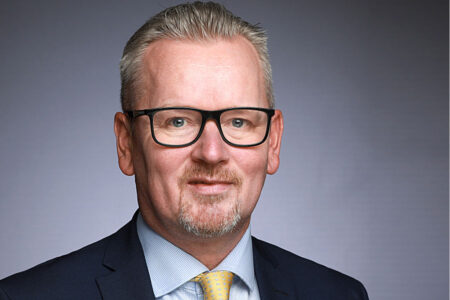A Q&A with Eric Stockland, MD, Co-Head of Global Electronic Trading and Michael Green, MD, COO of European Electronic Trading, BMO Capital Markets
Throughout global equity markets, there seems to be commonalities across regions. They are continually becoming more complex, they are becoming more fragmented, and they are becoming more electronic. According to a Coalition Greenwich research report The Globalization of Algorithmic Equity Trading: A Buy-Side View, electronic trading has grown to 42% of US and 44% of the European equity market commissions. In three years, managers expect this to grow to 48% and 50%, respectively.
Market innovations have driven regulators to try and keep up with the speed of innovation, while trying to maintain the delicate balance between the advancements in technology to facilitate more efficient trading alongside the fair and equitable access to capital markets and price discovery amongst all market participants.
At the heart of this innovation, is access to liquidity and having the ability to aggregate that liquidity to make the most informed trading decisions to yield best execution for your clients.
We had the opportunity to speak with Eric Stockland, MD, Co-Head of Global Electronic Trading and Michael Green, MD, COO of European Electronic Trading, both of BMO Capital Markets, to discuss the global challenges of effectively aggregating liquidity, with the more nuanced complexity as it applies to European markets.
Eric, what are the biggest challenges you see in the fragmentation of the markets you serve and how are you overcoming those challenges?

We service institutions in the US, Canada, and EMEA. We provide them with a suite of algorithms designed to leverage the regional market microstructure to trade with the least amount of impact, but in the most efficient and opportunistic way to achieve our clients desired outcomes.
In Canada, the issue of fragmentation is less complex than it is in the US and Europe. In the US, we have roughly 16 exchanges and 54 off-exchange venues we access. Having connectivity to these venues are table-stakes for anyone in this business, but the true level of value you can provide to your clients is not in the access, but it’s in how, when, and why you would choose to route to one venue over another, and during which phases of the algos aggression.
We call that, “Trading Where You Have Edge”. That edge comes from having people who deeply understand the regional market microstructure, who embody a performance-driven experimentation mindset, and who can construct algorithms that are explicitly designed to respond to the nuances of the market. By continuously making small improvements to an algo’s behaviour, we can consistently, with empirical evidence improve an algo’s performance.
We also use this “Edge” to lean into the introduction of new venues and to test their performance. As an electronic partner to our clients, it is our responsibility to present the unique liquidity profiles of new venues and to determine a systematic way to explore this new liquidity with minimal impact, while controlling for opportunity costs to determine if they indeed earn a spot within our routing protocol.
This is how we proactively manage fragmentation, and how we have successfully helped our clients explore new liquidity and improve their electronic performance. We are excited to take these learnings and apply them where applicable in EMEA.
Mike, Eric gave us an overview of BMO’s approach to venue fragmentation, how do you intend to apply it in EMEA?

The keyword Eric used is “proactive”, the one constant in our equity markets is innovation and as I see it, there are no signs of it slowing down. The fact is, we embrace innovation, and we have the benefit of transferring the knowledge obtained from our partners in North America to EMEA. It is what differentiates us from all the others.
Beyond the on and off-exchange fragmentation of markets, we must also contend with the implications of Brexit. Which essentially doubled the venues we need to access, exacerbating the issue of fragmentation in EMEA.
While it may seem like a daunting liquidity landscape, at BMO we not only have the technology to access these venues and the algo infrastructure to achieve our best execution obligations. We have the people who partner with our clients, examining the market microstructure, collaborating to build and optimise algos, with the goal of maximising our client’s performance outcomes.
On behalf of our clients, we must effectively navigate the European market structure at a time when volumes are moving off lit exchanges, to SIs, periodic auctions, MTFs, conditionals, and dark pools. In addition to the transition from intra-day trading to more significant volumes trading at the end of the day.
In Europe, we employ the same performance-based mindset. We constantly factor in our decisions to route, a venues quality of execution and potential for information leakage. Within our algo framework, we can choose when to trade passively, aggressively, or opportunistically. We can proactively manage within the upper and lower bounds of the trading schedule the child order slices behaviour as it relates to where we are within the schedule.
The way in which we manage the schedule, construct algo design, interpret the market microstructure, execute and analyse performance are the unique value-adds we give our clients.
We as an agency broker-dealer, are not contributing to the fragmentation. We don’t have an internal risk book and we don’t operate an SI. We provide unbiased routing protocols, driven by performance. As new venues enter the marketplace in Europe, they too will have to earn their spots in our routing protocols.
Looking ahead
As it seems innovation is here to stay, and whether fragmentation is viewed as good, bad or indifferent, brokers are going to have to figure out a way to evaluate venues and provide access and intelligence to their buy-side clients. We will continue to watch this space as European-based venues continue to innovate, and even as US-based companies, like OptimX, OneChronos, and Intelligent Cross prepare to engage in European markets.
*Market Viewpoints comprise sponsored content and do not necessarily reflect the views of the editor.
©Markets Media Europe 2024 TOP OF PAGE
